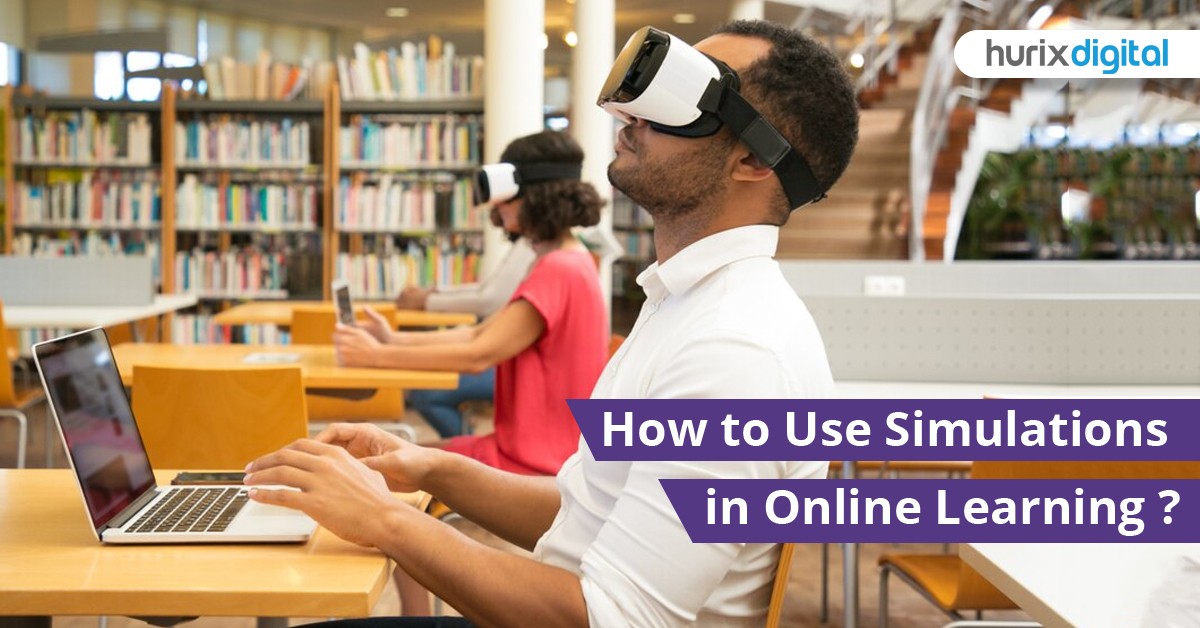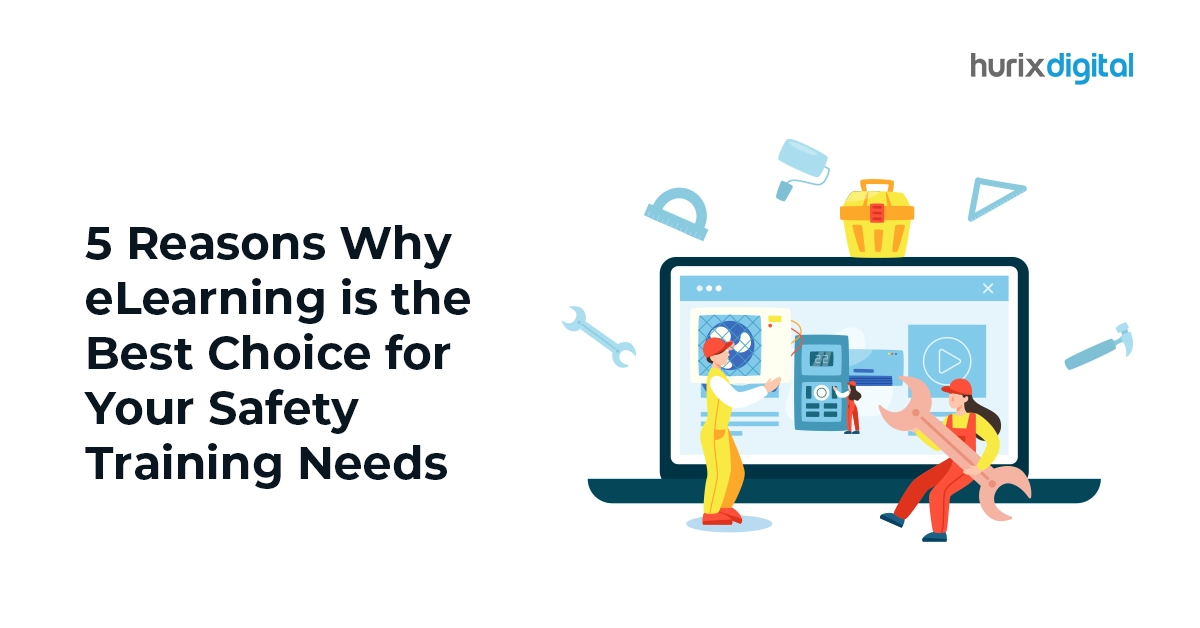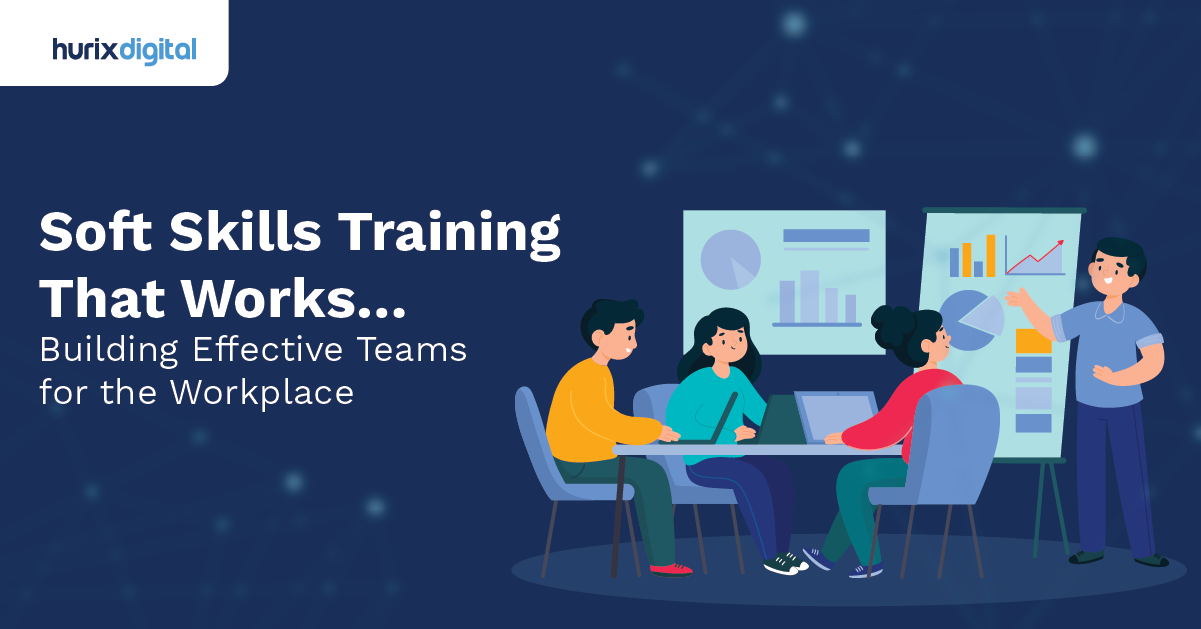
How to Use Simulations in Online Learning?
Simulations are emerging as an excellent solution to train your human resources. You can provide them with a safe environment where they can learn and develop real-life skills without risks.
As per researchers, simulation-based learning boosts the motivation of students. It also helps in the development of collaborative skills that are highly useful in professional life.
In addition, simulations help your employees think critically and get better at problem-solving. As a result, they are also able to make far better decisions that improve your business performance.
Best of all, simulations support better cognition and use a constructive approach to learning. Therefore, learners develop an emotional attachment to the learning outcomes.
It goes without saying enterprises should give a good thought about using simulations for employee training. The investment can bring awesome returns and make your workforce the most productive.
But how do you use simulations in your online learning programs?
Here is a detailed guide to help you out!
Table of Contents:
- What is Online Simulation?
- How to Incorporate Simulations in Online Learning
- Decide How You Want to Implement Simulations Online
- Create Your Simulation Learning
- Build Collaborative Elements to Connect Your Employees
- Include Assessments and Evaluations
- Provide Adequate Feedback
- Utilize Data from Your LMS to Refine Your Simulations
- Let Your Employees Know What to Expect
- Divide Your Training into Small Chunks
- What Types of Simulation-Based Training Modules Should Be Developed to Train Your Staff in Real-Life Skills?
- Customer Service Training Simulations
- Sales Pitch Simulations
- Crisis Management Simulations
- Software Application Simulations
- Simulations for Workplace Safety
- Conflict Resolution Simulations
- Leadership and Decision-Making Simulations
- Healthcare Training Simulations
- Supply Chain and Logistics Simulations
- Cultural Sensitivity and Diversity Training Simulations
- Considerations Before Selecting the Best Platform to Design Simulations in eLearning
- Final Thoughts
What is Online Simulation?
We will share a few words on simulations before we move on to our guide.
Simulations are virtual replicas of real-life scenarios and situations. They resemble video games on a certain level and use technologies like virtual reality (VR) and augmented reality (AR).
Simulation in eLearning goes a long way to create an experience similar to real life with high degrees of interactivity. As a result, they provide an immersive learning experience that motivates learners to give their best.
Simulations can be used in countless industries to provide effective learning and training.
How to Incorporate Simulations in Online Learning
Simulations may be incorporated into your existing training with the help of a tech expert. You may also develop your training or learning program from scratch focusing on simulations.
Here are the steps that you need to follow:
1. Determine the Skills You Want to Develop
Simulations can help your employees pick up a range of skills. From developing collaborative skills to learning how to handle machinery, simulations apply to most workflows.
So, you need to first decide which skills you want your workforce to learn. Make a list of those skills and move on to the next step.
2. Get Creative
Now comes the most exciting part of incorporating simulations into your learning program. You are going to think about what type of simulation you want to create for your employees.
It is like developing a video game where you create the storyline and what goes in your simulations. Therefore, put on your creative hat and start pondering.
The task may turn out to be challenging if you have never created a simulation in eLearning before. In such cases, you need to work with a reliable partner who can guide you successfully in your journey.
Below are a few tips that will make your simulations online more appealing:
Employees encounter a range of challenges at work every day. Simulations are best to help them learn how to tackle such disasters and develop vital skills along the way.
So, think of the mishaps that apply to your workplace and your employees. For example, industries like chemicals often face hazards like toxic spills.
You can create a simulation where your staff learns how to handle such disasters safely.
Simulations in eLearning shouldn’t just replicate real-life scenarios. They should encourage your learners to jump in and try to solve a problem as it’s fun.
So, you have to think of a storyline with which your employees can relate. Every character in your simulation should also have a backstory, like a customer.
Therefore, it helps if you create personas for your characters and provide a background. For example, your learners should know why a customer is unhappy when you are training them in conflict resolution.
Having a storyline makes learning engaging and leads to benefits like:
- Increased learning satisfaction
- Better achievements and progress
- Improved learning outcomes
Everyone loves fantasy. Best of all, it can work wonders to make your simulations more interesting.
However, you don’t have to make the whole of your simulation a fantasy story. Instead, you can use a fantasy theme or characters to instill real-life skills in your employees.
For example, your staff may play the game as a fantasy character like a sorcerer. Then they embark on a journey to find a treasure hidden in a far-away land.
However, during the journey, they solve obstacles that are tied to real-world experiences. Additionally, they may use real-life behaviors and tools to gain experience for their professional roles.
We gave an example of a toxic spill in a chemical factory. You can incorporate fantasy into this scenario, and maybe, convert the toxic spill into hot lava.
Now, your employees have to clear the toxic spill by performing real-life processes like wearing safety gear.
The above steps will help you develop the concept and storyline for your simulation. Next, you have to work to turn your concept into a working simulation.
Also Read: How Can Enterprises Implement Simulation Training for Employees
Decide How You Want to Implement Simulations Online
As we said earlier, you have two choices when you want to use simulations in online learning:
- Incorporate simulations into your existing training
- Build a training program from scratch integrating simulations
The first option requires you to assess your training program to find opportunities where you can integrate simulations. The task can be complex and you may experience difficulty if you lack the experience.
So, consult an expert who can provide guidance.
The second option can be a good choice if you don’t have a full-fledged training program. You can then develop your training by incorporating simulations more seamlessly.
Decide which way you want to go and progress to the next step.
Create Your Simulation Learning
Enterprises will now need to develop their simulations just like developing a video game. As a result, you will need a team of experts from different fields like animation, AR & VR, software development, and more.
Most organizations won’t generally have a team of professionals to develop a simulation. As a result, they may need to work with a reliable partner who takes charge of the process.
However, be sure to choose someone from the corporate learning realm to achieve optimum outcomes.
In addition, assess the expertise of your partner before you sign the deal. It is necessary to review available services and pick the best one for your needs.
Moreover, determine the level of interactivity you want in your simulations. Highly interactive experiences are more complex and need more time and investment.
So, join hands with the right partner for maximum returns.
Build Collaborative Elements to Connect Your Employees
Simulations can train individual employees on vital concepts. They have the freedom to act as they wish and make decisions without relying on others.
However, individual training is not the only forte of simulations. You can also create them to foster collaboration and improve communication between teams.
However, you have to develop your simulations by integrating opportunities for collaboration. Therefore, your tech partner will have to be involved in programming those interactions.
Additionally, team-based simulations will need careful planning. You will have to take into account several factors such as:
- The resources you will need to provide such opportunities
- Mapping out how your employees will interact in a virtual environment
- How their choices impact the learning outcomes
If done right, such an approach can lead to optimum collaboration and communication between group members. That may be highly desired as a collaborative work environment improves individual and group performance.
A study by Stanford backs up the claim. It found that even the perception of working as a team improved performance.
Additionally, it improves engagement, boosts success rates, and reduces fatigue. So, make your simulations collaborative in your best interests.
Include Assessments and Evaluations
Simulations provide a direct way to evaluate the performance of your employees. You can track their performance in the simulation to understand if they have been able to achieve the learning outcome.
However, you may build more ways of assessment in your simulations. For example, you can include a quiz that your learners answer using a computer in the virtual world.
You may come up with several such opportunities to integrate assessment techniques in your simulation. Additionally, your tech partner can guide and provide you with more insights to improve your evaluation approaches.
Provide Adequate Feedback
Your learners can get an idea of how they performed based on the consequences of the simulation. Let’s say an employee forgets to put on his virtual gloves while cleaning a toxic spill.
As a result, they burn their hands in the simulation and know they didn’t take the right step.
However, there is another type of feedback you can provide on how they performed after the simulation ends. It can give them important insights into areas of improvement and avoid any mistakes in real life.
For example, let’s say your sales reps succeeded in closing a deal with a customer. However, a few things they said or the way they talked might be improved.
In such cases, providing feedback after the simulation ends can improve performance further.
Your instructor can provide custom feedback to every learner individually. It is also possible to automate the process right from your learning management system (LMS).
Additionally, you should provide tips and solutions to resolve the mistakes they made.
Utilize Data from Your LMS to Refine Your Simulations
Modern LMS solutions come prepared with advanced analytics. It can help you keep an eye on all the nuances of how your employees perform.
Additionally, you can also track the development of their strengths, weaknesses, and skills. Therefore, you can gain complete visibility of their performance and areas of improvement.
Moreover, you can find out about the effectiveness of your simulation training. You will have crucial clues to know if your program is working or not.
Let’s say 30% of your learners are not able to achieve your learning objectives. In that case, you should take a hard look at your simulations and use your data to refine your training.
In addition, your LMS data will help you identify trends and patterns. You can then dive deep into the why of such trends and get more information to enhance your learning outcomes.
Let Your Employees Know What to Expect
Your employees should have clear expectations about your simulations. They should know what they are going to learn and how to access the training.
In addition, you should express everything in clear terms, such as:
- The devices and hardware your learners will use
- The specifications and standards for such devices (for example, operation systems and versions)
- Technologies they are going to use
- Apps, software, and platforms they need to sign up to
- Schedule or timing of training
- Any assessments they need to undertake
- Other requirements
Divide Your Training into Small Chunks
Employees have to perform their daily responsibilities along with undertaking training. As a result, they may find it difficult to juggle between work and learning.
Needless to say, that can take a toll on their productivity and business performance. Therefore, you cannot have your workforce participate in simulations for hours a day.
A better approach is to break your learning into small bites that your employees can easily digest. The process helps them stay productive and learn better with less stress.
Statistics also show the advantages of implementing microlearning. It enhances focus and improves retention rates by up to 80% in the long run.
You can sort your simulation into levels just like video games. Additionally, provide options for your employees to save their progress for more convenience.
What Types of Simulation-Based Training Modules Should Be Developed to Train Your Staff in Real-Life Skills?
Simulation-based training modules can play a powerful role by filling the gap between knowing what to do and doing what one knows. Below are key examples of simulation learning modules that can be created to train your employees effectively:
1. Customer Service Training Simulations
Equip staff with the ability to handle customer inquiries and grievances professionally. Simulated scenarios can help staff engage virtual customers and showcase real-time communication, problem-solving, empathy, etc.
2. Sales Pitch Simulations
These simulations increase persuasiveness and product knowledge, enabling sales staff to close deals effectively. For example, organizations can plan staff rehearsals of a sales pitch to virtual clients with varying needs and objections with instant feedback.
3. Crisis Management Simulations
Such modules train staff to stay calm and think clearly in the event of an emergency. Simulations based on cyber-attacks, PR crises, or business disruption scenarios can help employees plan under pressure.
4. Software Application Simulations
You can train employees on new software applications without forcing an interruption in the workflow. Employees can use interactive tutorials to practice operations through a simulated interface.
5. Simulations for Workplace Safety
These simulations help to make the workplace safer by identifying and mitigating risks. These enable workers to experience virtual workplaces and risks while practicing safety and appropriate conduct.
6. Conflict Resolution Simulations
Using such simulations, organizations can encourage the interpersonal skills development of employees for effective workplace conflict resolution. Simulations like these can be integrated into the role-plays of employees who mediate conflicts, negotiate solutions, and are professional.
7. Leadership and Decision-Making Simulations
Such simulations are critical for the development of critical thinking and leadership competencies of managers and team leaders. The managers are given dilemma situations where delegation and strategic planning decision-making are essential to achieve the business objectives.
8. Healthcare Training Simulations
These improve accuracy and judgment in high-pressure situations. For healthcare professionals, virtual simulations can replicate patient care situations, from procedures to diagnosis.
9. Supply Chain and Logistics Simulations
These solutions can develop supply chain managers’ skills to enhance a business’s effective running. Employees can engage in such simulations to manage stock, develop logistics, and plan alternatives during interruptions.
10. Cultural Sensitivity and Diversity Training Simulations
These simulations online can encourage inclusion and greater mutual understanding in the workplace. Using such solutions, virtual members of other cultures help staff learn to cooperate respectfully and effectively.
Considerations Before Selecting the Best Platform to Design Simulations in eLearning
The appropriate simulation creation platform is highly important in eLearning for delivering impactful, engaging, and practical training experiences. Here are essential factors to consider:
- Ease of Use and Customizability: A platform should be easy to use for developing and customizing simulations toward specific learning requirements. Consider platforms that offer user-friendly interfaces and drag-and-drop functionality to make it easier to design.
- Integration with Existing Learning Management Systems (LMS): Seamless integration is how simulations will be delivered and tracked seamlessly through online channels. Consider systems that are compatible with your existing LMS or learning ecosystem.
- High Interactivity Features: Interactivity in a simulation is what keeps a learner motivated and engaged. The platform should support multimedia elements, branching scenarios, and gamification features to enhance learner engagement.
- Scalability and Performance Metrics: Training needs may grow, and a scalable platform ensures consistent delivery for larger audiences. It must be able to scale for an increased user base and more complex simulations over time. Analytics tools should also be available to monitor learner performance to make data-driven decisions in terms of making simulations better.
- Cost and Return on Investment (ROI): It should fit your budget and provide measurable benefits. Assess the platform’s pricing structure in terms of the price-to-feature balance and determine your potential return on investment in the form of increased employee productivity and savings on training through online simulations.
Also Read: 6 Reasons Why Your Organization Needs Simulation Training
Final Thoughts
Simulations are a great way to train your employees in real-life skills. You can apply it to almost all industries to facilitate learning and improve engagement. Create a sound plan and form a partnership with the best tech leaders to generate the maximum ROI. Additionally, consider the nuances of the process, such as the learning styles of your workforce for personalized and effective training.
Hurix Digital brings interactive simulations to the field of eLearning, thereby encouraging higher levels of engagement and performance among employees. We shall work with you to create an engaging learning program in fun, innovative ways through custom-made, tailored simulations for employees’ skill-building and real-world preparedness!
Connect with us to get started on your journey to smarter, more effective employee training.









